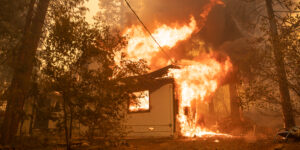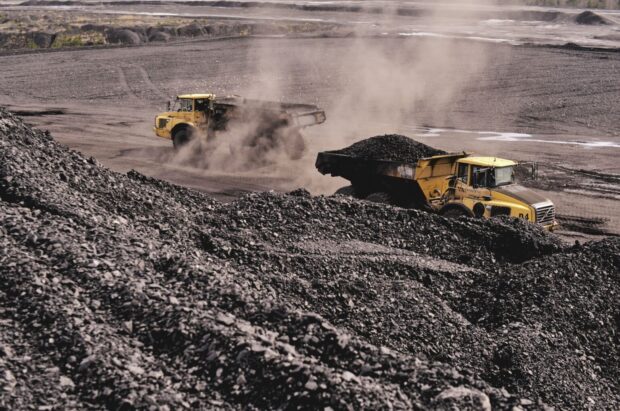A half-century ago, the nation’s top health experts urged the federal agency in charge of mine safety to adopt strict rules protecting miners from poisonous rock dust.
The inaction since — fueled by denials and lobbying from coal and other industries — has contributed to the premature deaths of thousands of miners from pneumoconiosis, more commonly known as “black lung.” The problem has only grown in recent years as miners dig through more layers of rock to get to less accessible coal, generating deadly silica dust in the process.
One former regulator called the lack of protection from silica-related illnesses “stunning” and one of the most “catastrophic” occupational health failures in U.S. history.
Now the federal Mine Safety and Health Administration has proposed a rule that would cut the current limit for silica exposure by half — a major victory for safety advocates. But there is skepticism and concern about the government following through after years of broken promises and delays.
James Bounds, a retired coal miner from Oak Hill, W.Va., said nothing can be done to reverse the debilitating illness he was diagnosed with at 37 in 1984. But he doesn’t want others to suffer the same fate.
“It’s not going to help me — I’m through mining,” said Bounds, 75, who now uses supplemental oxygen to breathe. “But we don’t want these young kids breathing like we do.”
The rule, published in the Federal Register this month, cuts the permissible exposure limit for silica dust from 100 to 50 micrograms per cubic meter of air for an 8-hour shift in coal, metal and nonmetal mines such as sand and gravel.
The proposal is in line with exposure levels imposed by the Occupational Safety and Health Administration on construction and other non-mining industries. And it’s the standard the Centers for Disease Control was recommending as far back as 1974.
Silicosis is an occupational pneumoconiosis caused by the inhalation of crystalline silica dust present in minerals like sandstone. The U.S. Department of Labor began studying silica and its impact on workers’ health in the 1930s, but the focus on stopping exposure in the workplace largely bypassed coal miners.
Instead, regulations centered on coal dust, a separate hazard created by crushing or pulverizing coal rock that also contributes to black lung.
In the decades since, silica dust has become a major problem as Appalachian miners cut through layers of sandstone to reach less accessible coal seams in mountaintop mines where coal closer to the surface has long been tapped. Silica dust is 20 times more toxic than coal dust and causes severe forms of black lung disease even after a few years of exposure.
An estimated one in five tenured miners in Central Appalachia has black lung disease; one in 20 has the most disabling form of black lung.
Miners are also being diagnosed at younger ages — some in their 30s and others with the advanced kind in their 40s. “That’s just nuts,” said Dr. Carl Werntz, a West Virginia physician who conducts black lung examinations and described cases as “skyrocketing.”
United Mine Workers of America President Cecil Roberts said there’s no reason a 35-year-old miner should be diagnosed with a disease “that’s going to cost him his life.”
“Nobody should be dying because of a job they have,” Roberts said.
The federal mine safety agency’s existing silica standards were developed in the 1970s, around the time of the U.S. Coal Mine Health and Safety Act of 1969 and the Federal Mine Safety and Health Act of 1977.
West Virginia University law professor Pat McGinley, who was part of a state team investigating the 2010 Upper Big Branch mining disaster that killed 29 miners, called the resurgence of black lung “unparalleled” when it comes to occupational health failures. In the Upper Big Branch mine, 71 percent of the 24 miners who received autopsies were found to have black lung.
“I can’t think of any occupation where there has been such devastation that’s been ignored by corporations and the government,” he said. “It’s stunning.”
The new rule is supported by Democratic Sens. Joe Manchin of West Virginia, Sherrod Brown of Ohio, Bob Casey and John Fetterman of Pennsylvania, and Mark Warner and Tim Kaine of Virginia, who pushed for the change and released a joint statement saying protecting miners from “dangerous levels of silica cannot wait. ”
The Mine Safety and Health Administration will be collecting comments on the proposal through Aug. 28, with three hearings scheduled in Arlington, Va., Beckley, W.Va., and Denver.
One issue expected to come up: the use of respiratory protection equipment.
The National Mining Association, which represents mine operators, wants workers to be permitted to use respirators as a method of compliance with the rule.
“These are recognized industrial hygiene practices utilized by” federal regulators in other industries, “but not in mining,” spokesman Conor Bernstein said, adding that better ventilation controls, safety awareness and regulations on coal dust have all contributed to “exponentially lower dust levels” inside U. S. mines in recent years.
The mine workers’ union and others, however, say respirators are ineffective while performing heavy labor in hot, confined spaces common in mines. The proposed rule allows for the use of respirators on a temporary basis while operators are implementing engineering controls. But advocates say inspectors aren’t present often enough to ensure they don’t become a permanent solution.
“The history of miner safety and health enforcement teaches us that exceptions become the rule,” said Sam Petsonk, a West Virginia attorney who represented miners who were diagnosed with black lung after operators knowingly violated regulations.
The proposed rule also includes a provision that allows companies to self-report silica levels. Federal inspectors conduct spot checks to ensure accuracy, but mine operators still have leeway to manipulate reporting data, said Willie Dodson, Central Appalachian field coordinator for Appalachian Voices, an advocacy group.
Ideally, federal inspectors should take samples day after day in a given mine to determine compliance, he said.
A coal dust examiner who worked for a Kentucky mining company was sentenced to six months in prison last month for falsifying dust samples and lying to federal officials.
In rural Nickelsville, Va., near the Tennessee line, Vonda Robinson says miners and their families are owed more accountability from the federal government and mine operators. Her husband John was diagnosed with black lung about a decade ago at 47. Now, his doctors say he will need a lung transplant.
Vonda Robinson said her husband doesn’t know what to say when his 5-year-old granddaughter asks why he can’t run and play with her, why even walking down the end of the driveway leaves him physically spent.
“He’ll tell her ‘Honey, papaw can’t do that,'” she said.
During his 28 years mining, John Robinson would come home with his face covered with dust. But she tried not to worry. Everyone in the community mined coal.
“He was one of those that wanted to go in the mines to give his family the American dream -the nice house, vehicles, put our kids through college,” she said. “And this is what he got.”
Daly reported from Washington.





















 Study: Hurricane Waves Hitting U.S. Grow By 20% Per Decade
Study: Hurricane Waves Hitting U.S. Grow By 20% Per Decade  The Latest Launches: Click for Cyber Insurance
The Latest Launches: Click for Cyber Insurance  Munich Re Specialty Launches FAIR Plan Commercial Wrap Product in California
Munich Re Specialty Launches FAIR Plan Commercial Wrap Product in California  InsurTech Profile: Optimalex’s AI Tools ‘Co-Pilot’ Alongside Human Expertise
InsurTech Profile: Optimalex’s AI Tools ‘Co-Pilot’ Alongside Human Expertise 